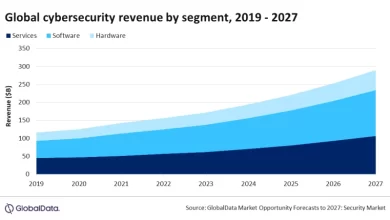Agile by Design: Cybersecurity at the Heart of Transformation

Unlock the dynamic interplay between cybersecurity and agility in today’s business landscape. Explore how organizations can fortify their defenses, foster innovation, and thrive amidst uncertainty.
In an era defined by rapid technology advances, geopolitical complexities, and economic uncertainties, organizations face a daunting challenge: how to thrive amidst constant disruption and change.
As businesses look to digital transformation to drive innovation, efficiency, and growth, they must deal with growing cybersecurity risks. From sophisticated cyber attacks to the complexities of modern IT infrastructure, the challenges have never been higher.
In this blog, we explore the dynamic relationship between cybersecurity and agility, looking at how security leaders can leverage them to foster cyber resilience. Drawing insights from industry expert and Noetic advisor, Richard Horne, we’ll examine the transformative effect of seeing cybersecurity not as an isolated concern, but as a strategic imperative that underpins organizational agility and innovation.
The Nexus of Cybersecurity and Agility
Every facet of business operations has become intertwined with technology, creating new opportunities for innovation and efficiency. In this interconnected environment, traditional distinctions between physical and digital operations have become obsolete, also introducing new cybersecurity risks.
Organizations rely on a complex network of interconnected systems, devices, and platforms to support all aspects of business. Gone are the days where the CISO was responsible for safeguarding isolated IT systems; now, cybersecurity permeates every aspect of organizational infrastructure, from the factory floor to the boardroom. This shift reflects the evolving nature of cyber threats, as well as the significance of cybersecurity in fostering business agility and resiliency.
“We’re in a world where we’re rebuilding how our businesses work. We’re redefining how our organizations function and the driver behind that is technology and what technology can do for us…
And we face a choice as we go through this journey as organizations, as to whether we deploy that technology in a way which makes it secure and makes us resilient to attacks, [and so] putting cybersecurity at the heart of that disruption is really important.” – Richard Horne
Cybersecurity cannot be an afterthought as businesses harness technology to drive innovation, efficiency, and growth; it must be seamlessly woven into the fabric of an organization’s entire infrastructure.
By integrating cybersecurity from the ground up, organizations create a robust defense mechanism that protects against cyberattacks while facilitating the seamless adoption of new technologies. Those who have meticulously crafted their cybersecurity programs to align with their overall technology framework are better equipped to withstand modern threats and unexpected disruptions both today and in the future.
“I think one thing that’s fascinating around cybersecurity programs is that those that have really thought through their cybersecurity architecture and integrating cybersecurity into their technology architecture overall are far more agile in terms of how they can embrace new technologies like AI, different services in the cloud.”
A Shift in Perspective
In the rush to capitalize on digital opportunities teams often overlook the critical role of infrastructure. In this video Richard Horne sheds light on an important shift in perspective: infrastructure is not merely a cost to be minimized, but a strategic asset that underpins organizational agility. This shift in mindset reflects a growing recognition among progressive security leaders who refuse to let it take a backseat to new technologies and applications. In fact, the top 5% of performers are five times more likely to already be very satisfied with their current cyber technology capabilities.
Consider this: Is your IT architecture overly complex, making it difficult to ensure robust protection? In today’s digital landscape, the complexity of IT architecture can become a hindrance to cybersecurity. As organizations adopt new technologies, integrate disparate systems, and scale operations, their infrastructures can become convoluted and difficult to manage. This complexity not only increases the attack surface for potential exposures, but also poses challenges in implementing and maintaining effective security measures.
Neglecting this key consideration can also create loopholes that make it easier for threat actors to exploit weaknesses in your defense systems. These weaknesses could stem from misconfigurations, outdated software, or inadequate security protocols. The interconnected nature of digital systems means that a weakness in one area can have far-reaching implications, potentially compromising the entire network.
The interplay between cybersecurity, agility, and technological innovation underscores a fundamental truth: in today’s dynamic business landscape, success hinges on the ability to navigate uncertainty with resilience and adaptability.
From safeguarding sensitive data to ensuring the seamless adoption of new technologies, cybersecurity is no longer an isolated concern but an integral component of organizational strategy. By weaving cybersecurity into the fabric of their infrastructure, organizations can fortify their defenses against evolving threats while fostering agility and innovation.
Check out the podcast for more insights from our full interview with Richard: Securing our Future, ep. 2: Resilience, Transparency and Transformation.
*** This is a Security Bloggers Network syndicated blog from Noetic: Cyber Asset Attack Surface & Controls Management authored by Alexandra Aguiar. Read the original post at: https://noeticcyber.com/cybersecurity-at-the-heart-of-transformation/



